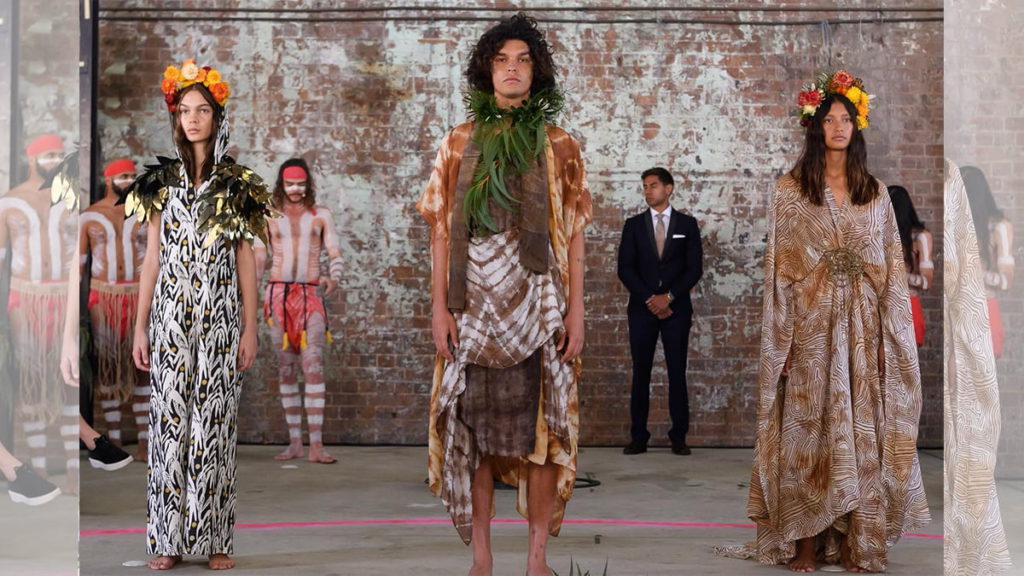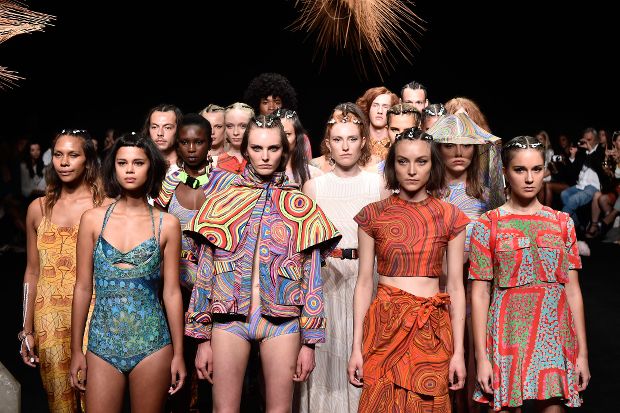Source Sweater Jackets One of the newest winter fashion trends that we are really excited to experiment with are the combination of a sweatshirt jacket and an Aboriginal flag t shirt. We all know winter fashion is about layering and this is one of the best pieces for layering that you can invest in.
The growing popularity of Indigenous apparel is more than a just a trend. Today, interest is again being expressed in making pelts made from animal hides, skirts made from feathers, and other forms of traditional dress. Today, many Indigenous nations are using dress as a way of maintaining their culture and proudly showing off their heritage.
Indigenous designers are incorporating traditional designs and techniques in their garments and supporting them is a good way to return respect to Indigenous styles. Indigenous fashion is designed, made, or inspired by Indigenous Australians. Because each of these groups has their own history, art, language, and culture, there is not one uniform vision for Aboriginal dress and fashion.
For most Aboriginal peoples throughout Australia, clothes come in a variety of forms, worn according to what is required by their surroundings. Part of the general set of assumptions which has characterized how history has been taught in Australian schools since Europeans arrived is the notion that the first nations of Australia did not wear clothes in traditional times.
Some human cultures, like various peoples in the Arctic Circle, have traditionally made the clothes of certain human cultures completely out of furs and decorated hides. Clothed All the first nations across the nation, except those on the Pacific coast, make their clothes–typically robes, pants, and loafers–of tanning animal hides. Many Woodlands, Haudenosaunees, and Northern First Nations used dyed porcupine quills to stitch designs onto clothing and moccasins for the many Woodlands.
Like their Northern Plains trading partners, these groups painted their own tipis, pelts, bags, and containers, and decorated clothing and other soft goods with dyed porcupine quills and, later, with glass beads. Aboriginal clothing for those groups who did not use horses consisted of aprons made from sage bark and burlap, supplemented in the winter with robes made from rabbit hide; their artistic efforts were frequently expressed in the form of elaborate basketry and cave art (petroglyphs and cave paintings). Horse-using groups were active traders amongst themselves and with others, including fur traders; Shoshone dress was especially valued in trade because of its beauty and durability.

Native Americans often used bison fur, which was suited well to the winter season as it had two layers, an outer hard coat providing some resistance to wear, and a lower, insulation-rich layer of down, the pelt of a bison. Nowadays, it is associated with expensive, designer clothes in developed countries, though the fur is still used by Indigenous Peoples in Arctic regions and at higher elevations because of its warmth and protection.
Indigenous dress and hair may be used to reflect social orders, gender, age, marital status, familial membership, and more (McCord Museum, 2013). Indigenous clothing and hair may have great significance for those wearing them as well as those seeing them. Fashion is more than an article of clothing; it is a reflection of what we value as a society.
The distinction between clothes and protective gear is not always a clean one, because clothes designed for fashion usually have a protective value, while clothes designed for function usually consider fashion when designing them. Many types of clothing are designed to be ironed prior to wearing, to eliminate wrinkles. Men’s clothes are usually more utilitarian (that is, can work well in a wider range of situations), but women have a wider variety of styles to choose from.
It is best to avoid buying infant clothes that have beads, strings, straps, draws, and fasteners. Because babies truly grow so quickly, you may try buying as few clothes as possible at each size. Cotton clothes will keep baby cooler in warm weather compared to clothes made from synthetic fibers. It is also important to look out for clothes that have low fire-hazard labels. Caribou leather garment construction is a complicated process and takes considerable time to perfect. Due to arm movements on the body, caribou clothes typically become worn over a period of one year. Lack of adequate winter gear was also probably contributing to the students’ illnesses, such as tuberculosis, pneumonia, and fever.
At different times, the Singwauk was desperate for clothes, particularly warm winter clothes like mittens, caps, and coats, and many boys were expected to go on in the cold with no clothes. E.F. Wilson purchased the clothing, or the Sunday school or an individual could pay $50 and send 1 coat, 2 suits, 3 shirts, 4 pairs of socks, 2 caps (1 winter, 1 summer), 1 pair of boots, 1 muffler, 1 pair of mitts, 2 pairs of winter mittens, 2 stockings, 2 jacks, and 4 pocket squares. Since most of this work was done by women of the household, they were continually engaged in the hard, physically demanding labor of making and caring for clothing.
Modern European fashions are far less conservative with clothes, generally cutting them so that they leave a variety of oddly shaped cloth residues. Clothing has been made of an extremely broad variety of materials, ranging from leather and fur, woven textiles, and complex, exotic natural and synthetic fabrics.
From Aboriginal fashion designer Arkie Paton comes Arkie, a clothing label catering to young women with eclectic styles. Design Within Country is a fashion label created for the Aboriginal Art Fair in Darwin, which features works by Indigenous and the studios resident artists-in-residence at Marnin. Below is a look at the below brands (be sure to also see some of our favorite indigenous-owned beauty products).
